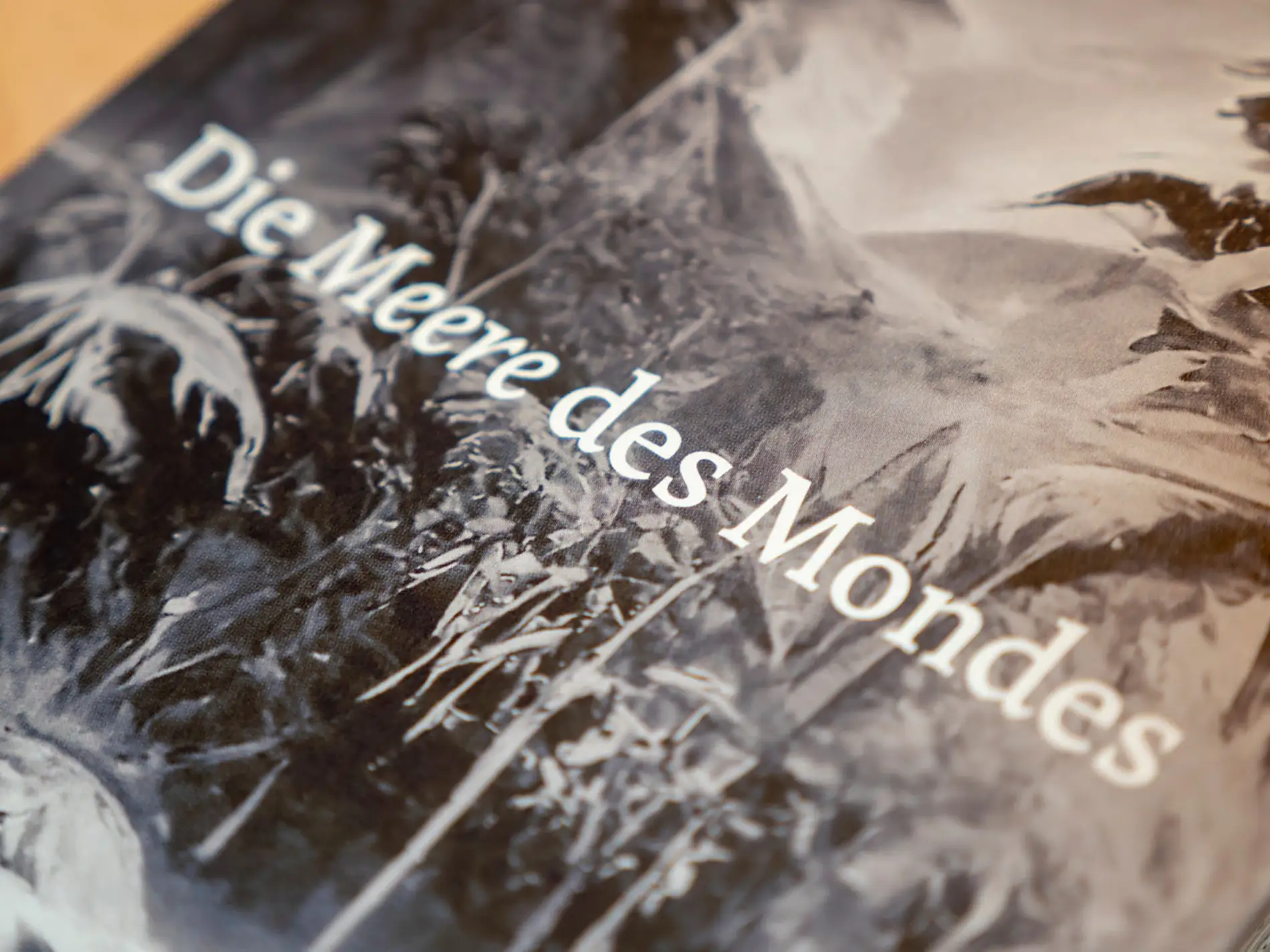
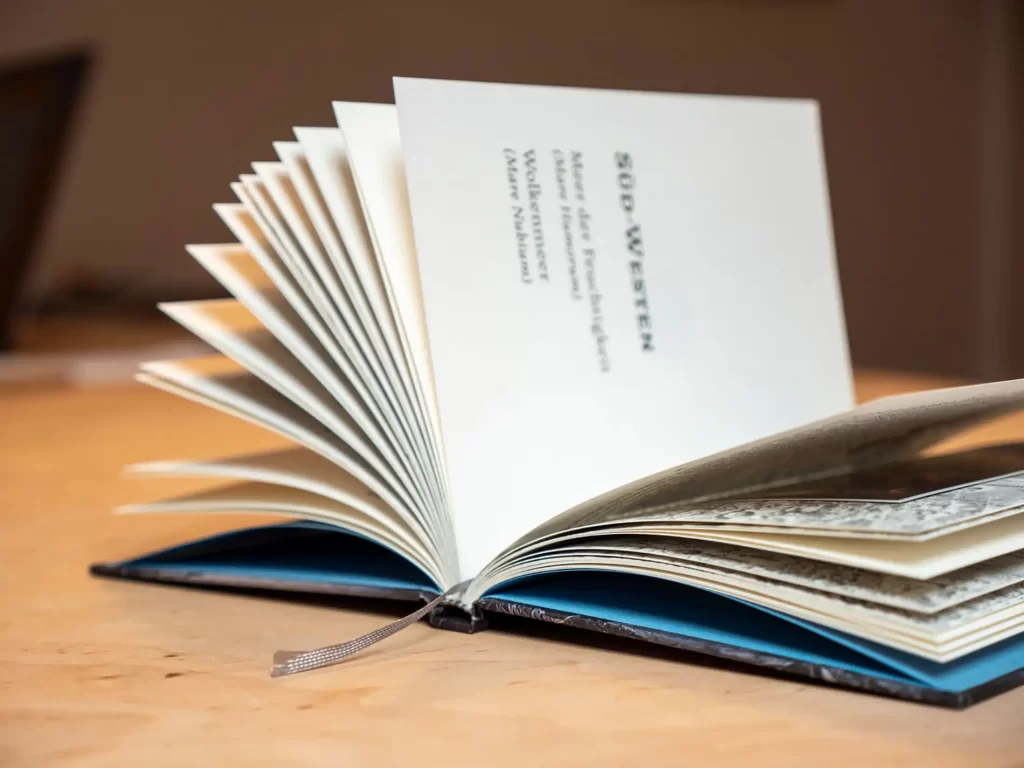
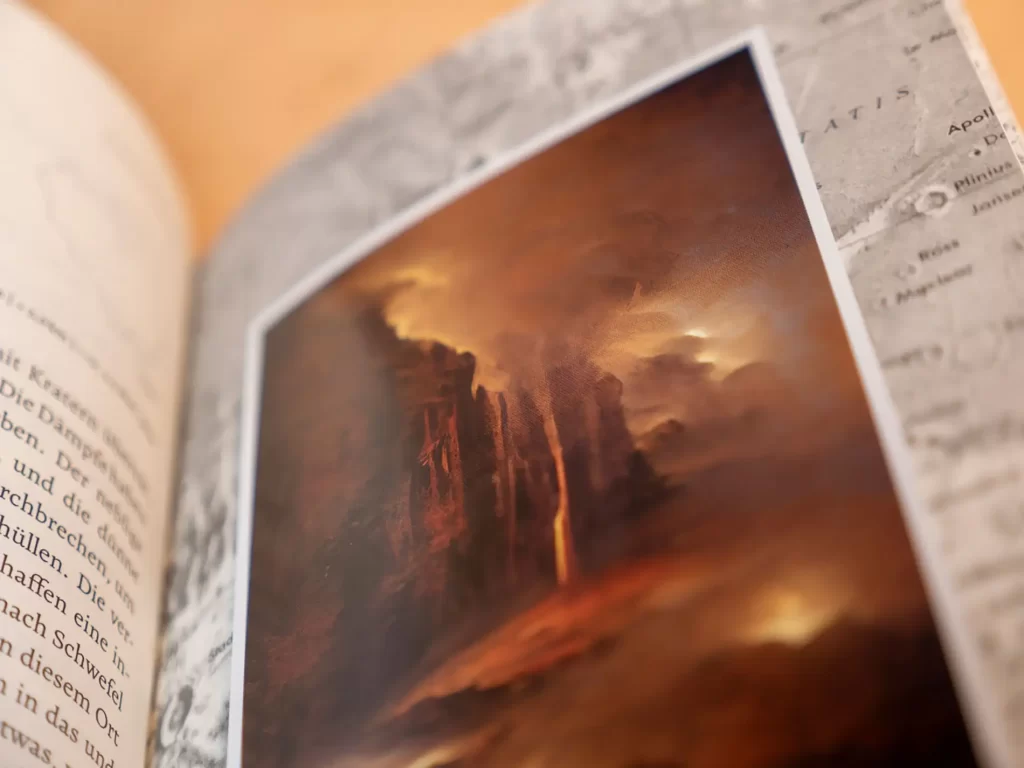
In 2023, when the hype surrounding artificial intelligence was just picking up speed, graphic designer Robert Steinmüller used the new tools to write and design a book that would not have existed without AI. The imaginative story about a Renaissance explorer and the wondrous landscapes of the moon has now been published as a real book. And it has become a particularly beautiful object with outstanding craftsmanship. "The Seas of the Moon" is an example of how creative people can use intelligent tools to realize things that would previously have been unthinkable.
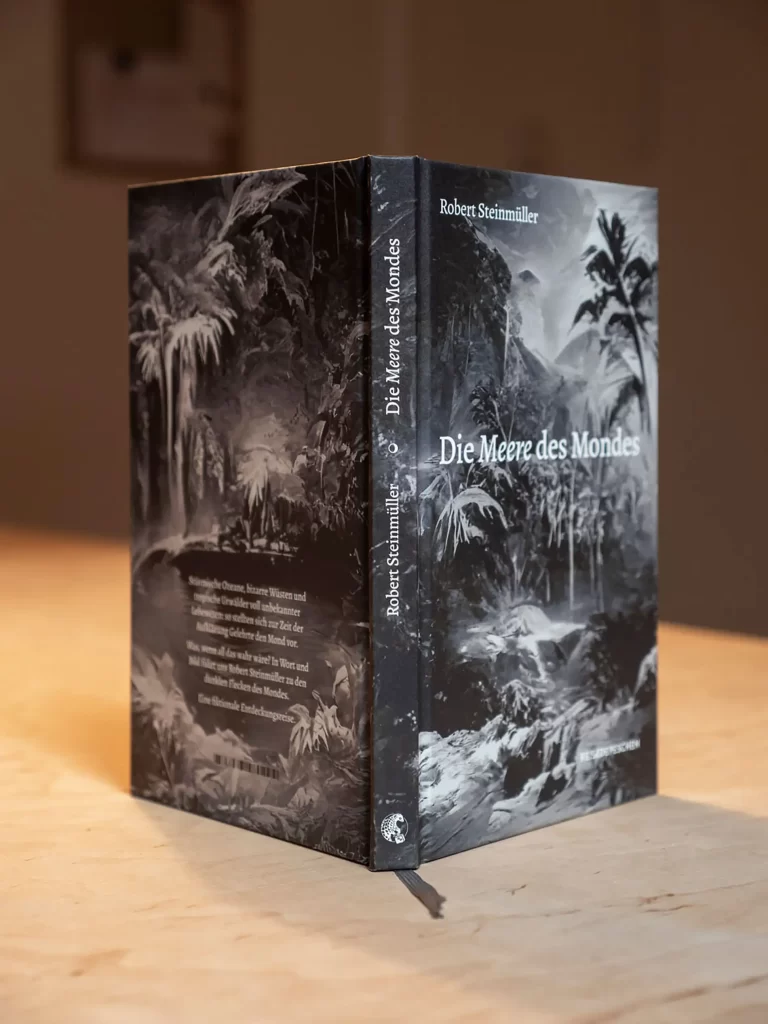
This text originally appeared in Grafikmagazin 04.23. The book has since been published by Reisedepeschen Verlag. In keeping with the subject matter, great importance was attached to craftsmanship and quality during production. "The elaborate design, typography and production with hand-attached images and various papers is reminiscent of an encyclopaedic illustrated book from the early days of industrial book production," says the publisher.
Have you ever wondered why there are oceans on the moon? For example, the Sea of Serpents, the Sea of Serenity, the Sea of Clouds and the Ocean of Storms. There are also lakes, bays and swamps, such as the Lake of Oblivion or the Swamp of Sleep. These names alone conjure up the most beautiful images and incredible stories. The graphic designer Robert Steinmüller was inspired by them to create a book - which he realized with the help of various AI tools.
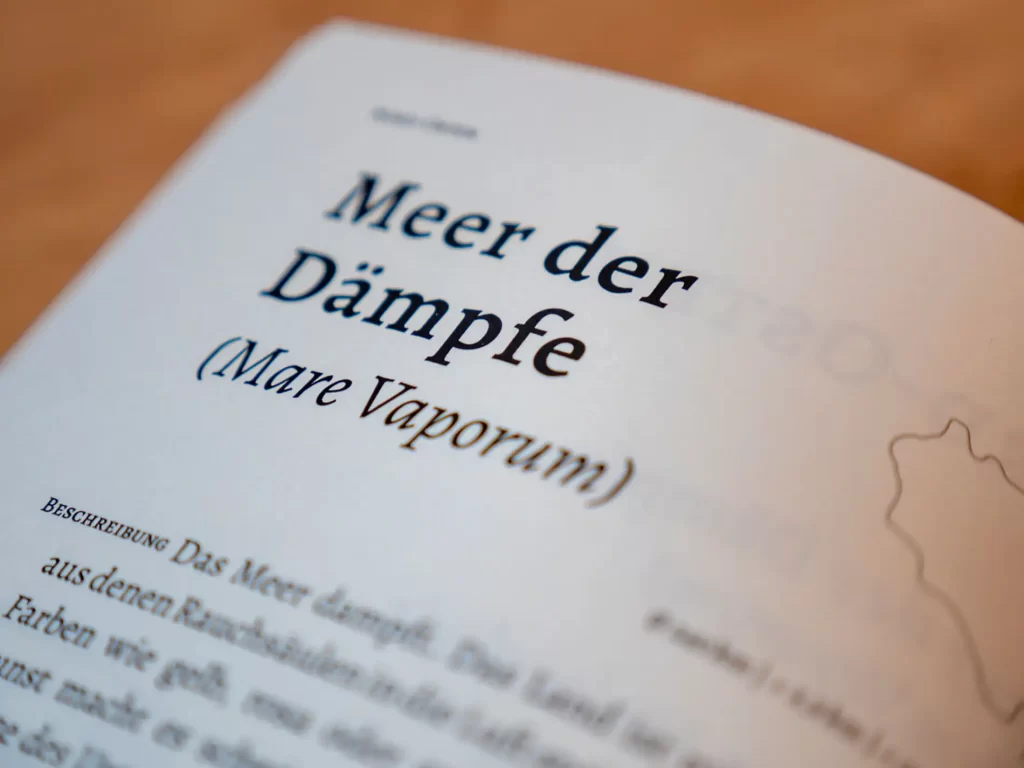
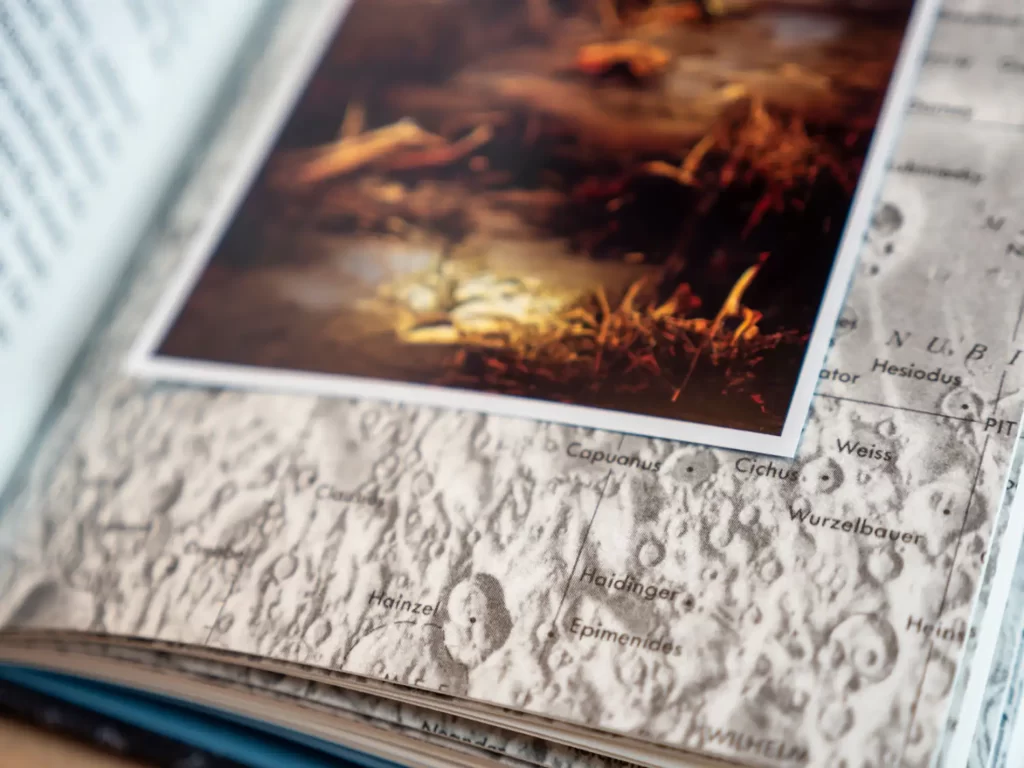



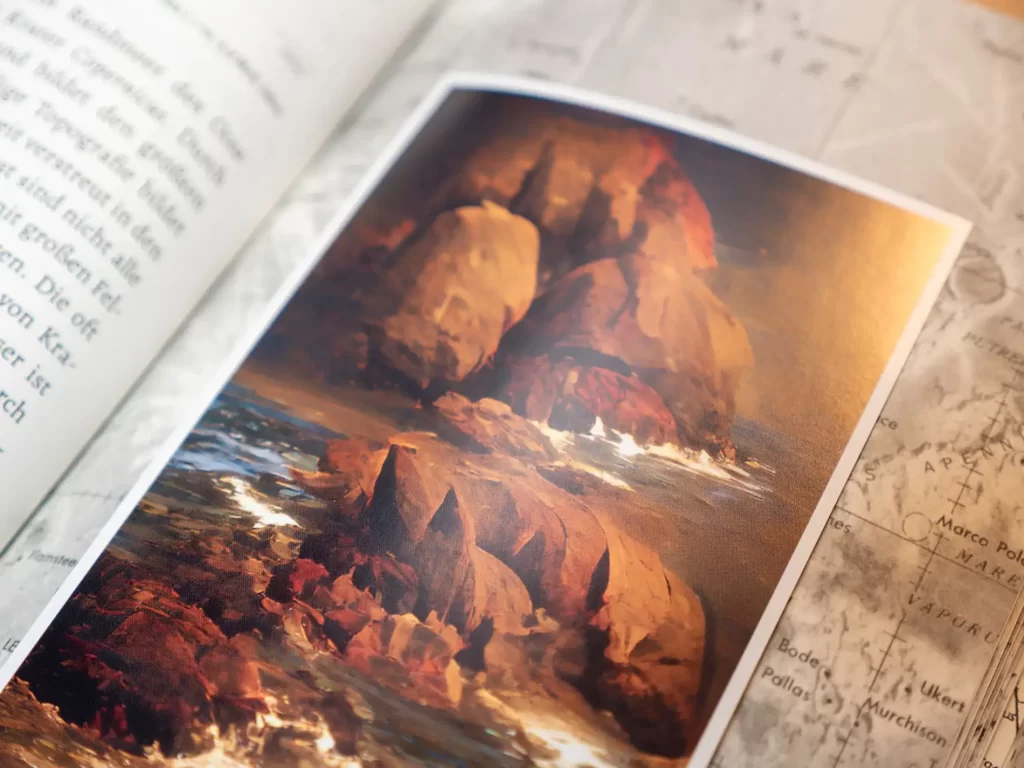
During the Renaissance, people began to turn their attention back to science and explore the world, including outer space. The invention of the telescope led to further discoveries; Galileo Galilei, for example, was able to see the mountains of the moon. However, the dark spots on the surface of the moon can also be seen with the naked eye and have always fired people's imagination. As they were thought to be areas of water, they were named accordingly. The poetic names, in turn, appealed to Robert Steinmüller. As a graphic artist and book designer, he is constantly trying out new techniques and technologies in his freelance projects and, with the oceans of the moon, he found the perfect starting point for experimenting with artificial intelligence.
Steinmüller made the Italian student Enzo G. Benvolio his protagonist and had him explore the lunar landscapes through the eyes of a Renaissance man. The "historical" records, however, were generated by an AI. Steinmüller came up with ten key points for selected seas and fed them into a text generation tool. The Jasper app then provided him with text suggestions, which the designer used as raw material for his narrative. The images used to illustrate "Seas of the Moon" were also created by artificial intelligence. Steinmüller used the Wombo app here because, unlike other image generation tools, it offers the option of deciding on a style in advance.
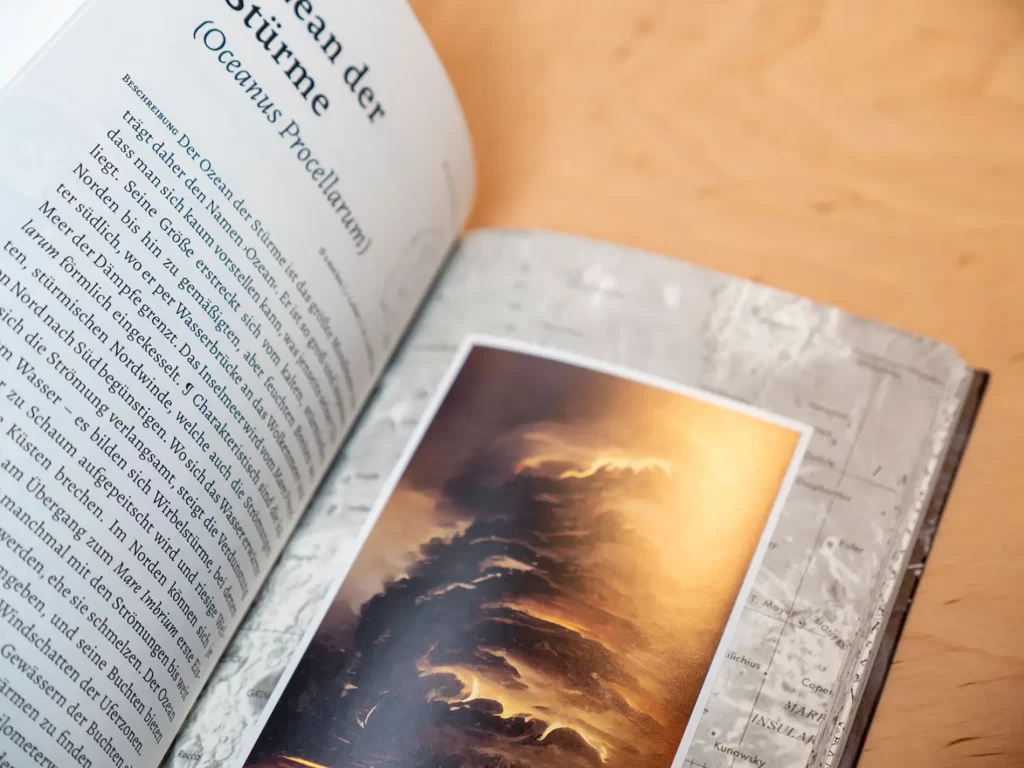
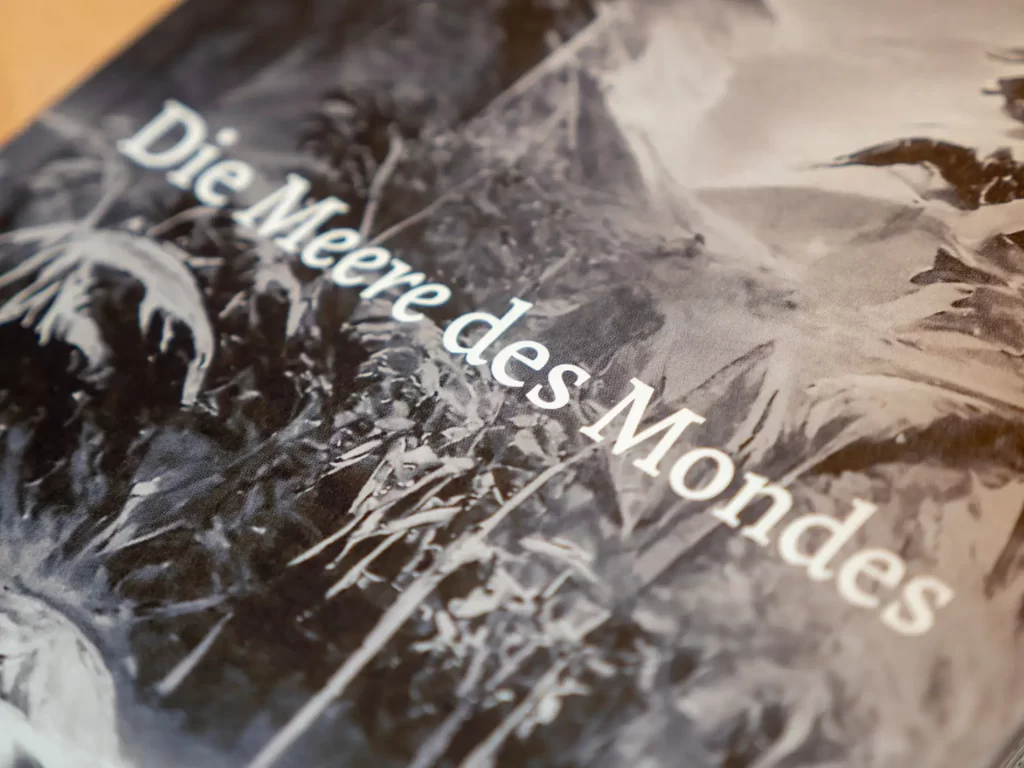
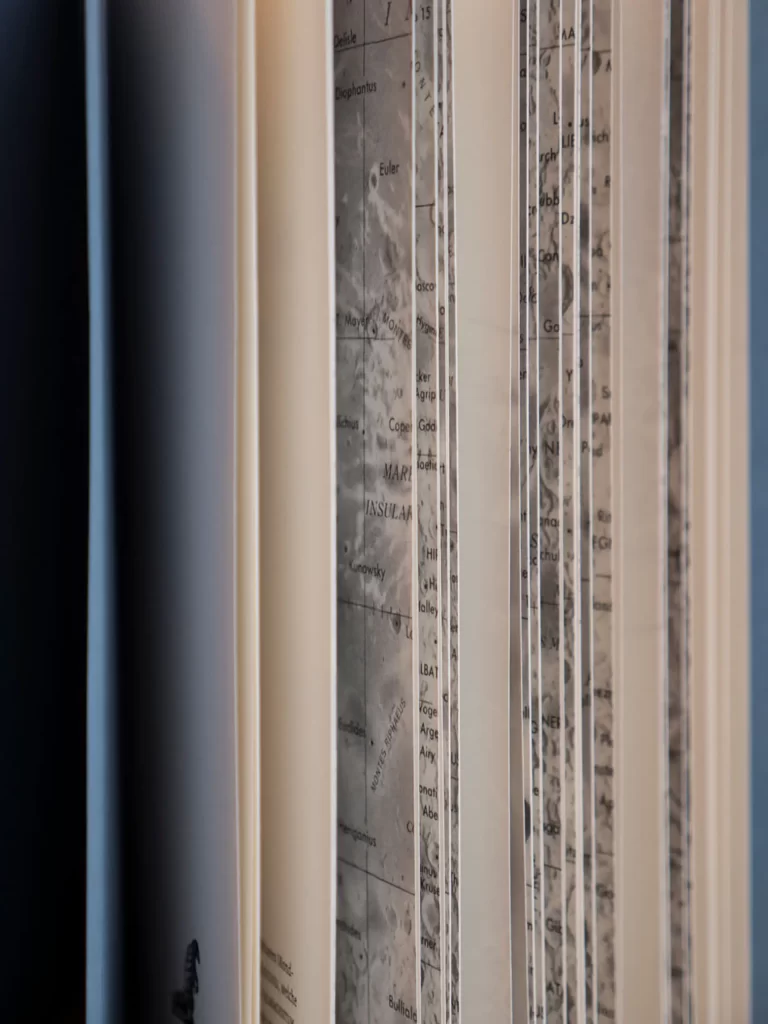
So you don't have to laboriously approach an aesthetic via prompts and the images have greater visual consistency. This was important to the graphic designer, because the book should look as if it had been written by a Renaissance naturalist. Of course, prompts were still needed. Two animals and plants are described for each sea, plus a special feature that characterizes this particular place. At some point, Steinmüller couldn't think of any more special features, so he used ChatGPT and the work could continue.
"Artificial intelligence will play a major role in our day-to-day work as designers in the future. We should face up to this," says Robert Steinmüller. So it's about learning to use these tools and recognizing their potential. "Without AI, the textualization and illustration of my book idea would never have been possible," he says and is delighted that after a first small artist's edition for "The Seas of the Moon", things will continue and the book will also be published by a real publishing house in the autumn.
The seas of the moon. A fictional voyage of discovery to the dark spots of the moon
Robert Steinmüller, Reisedepenschen Verlag, €20.00, ISBN 978-3-96348-029-4


